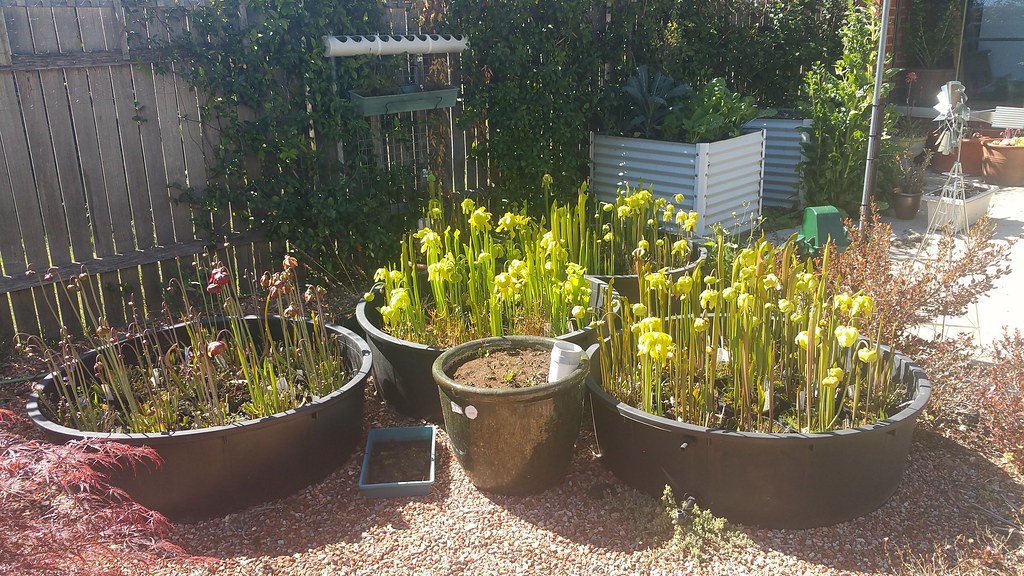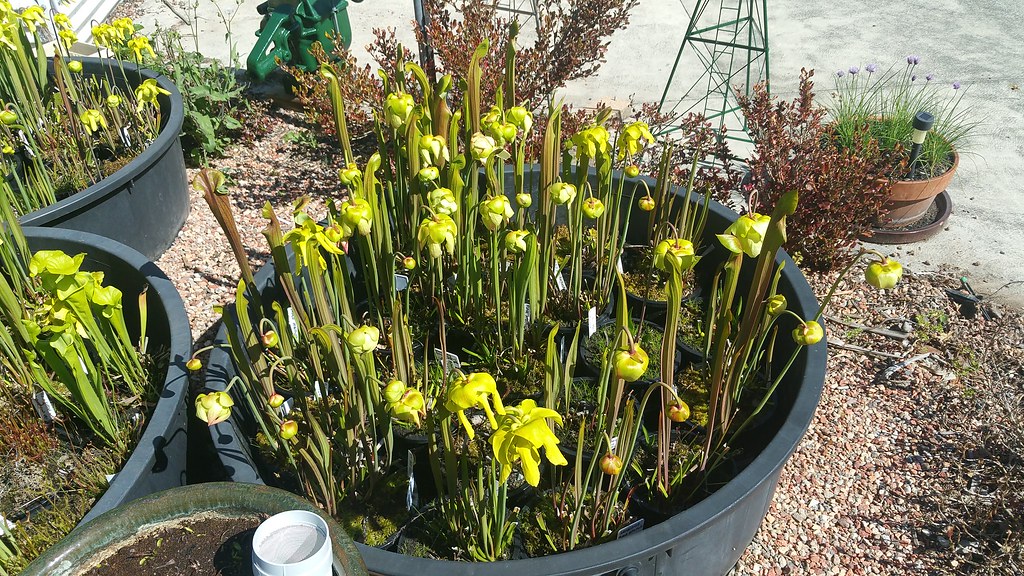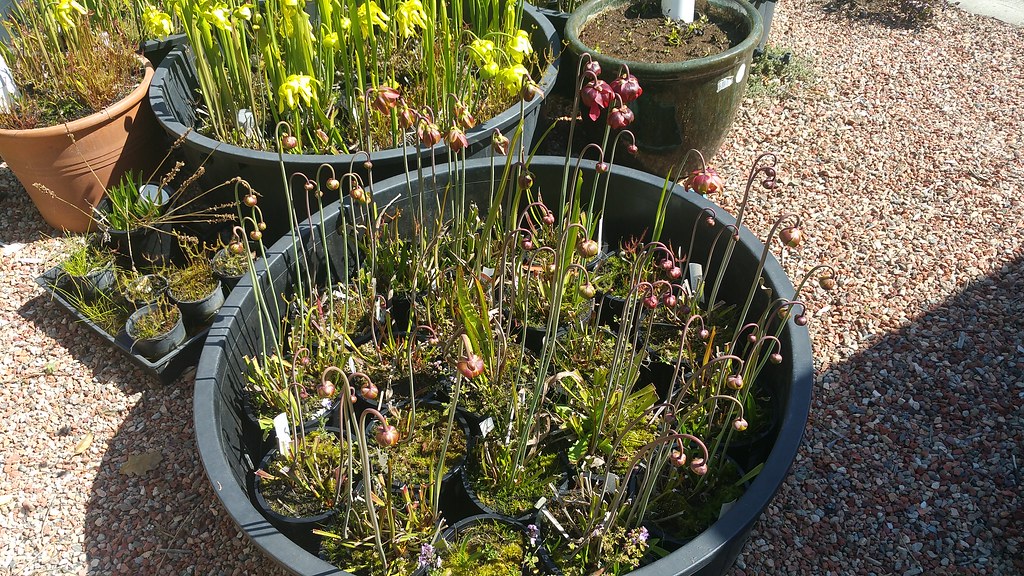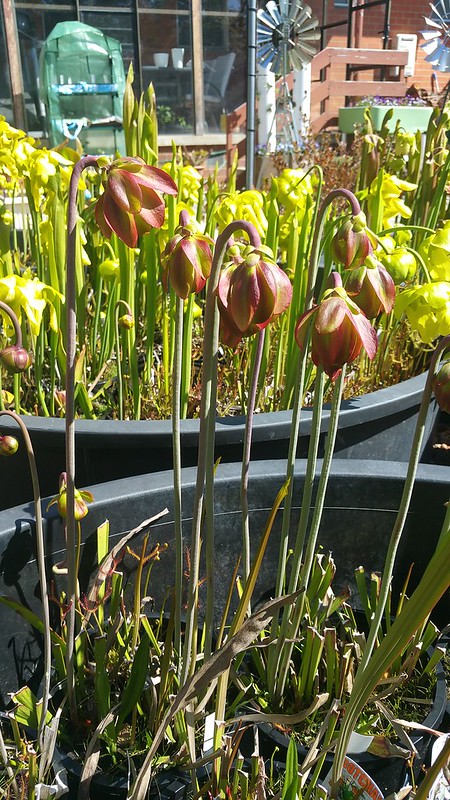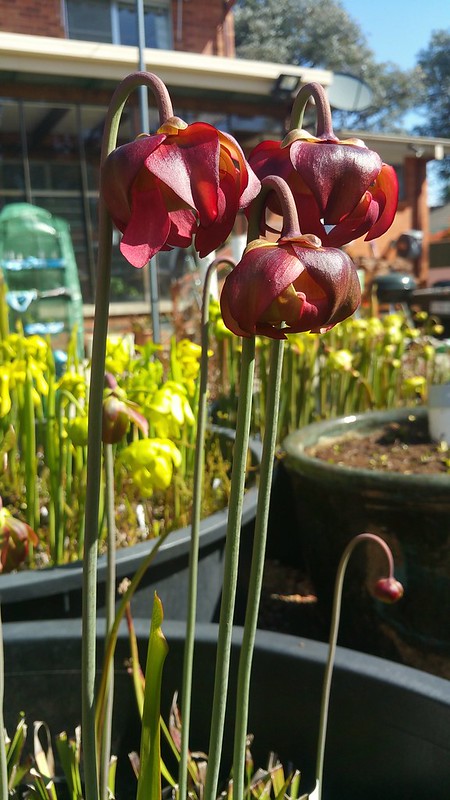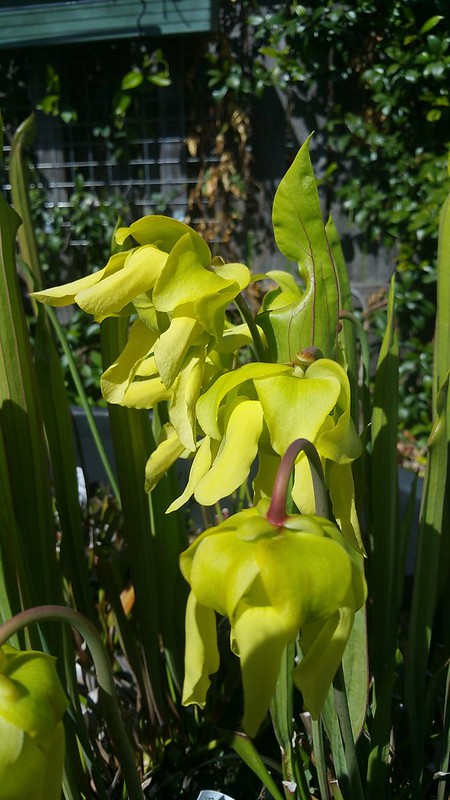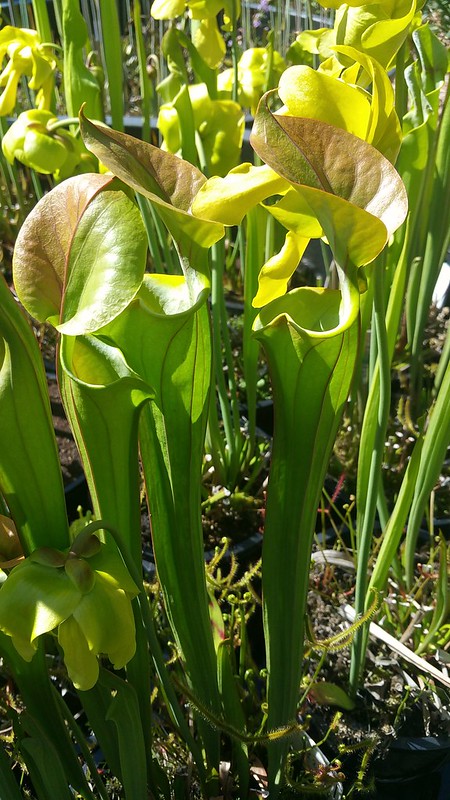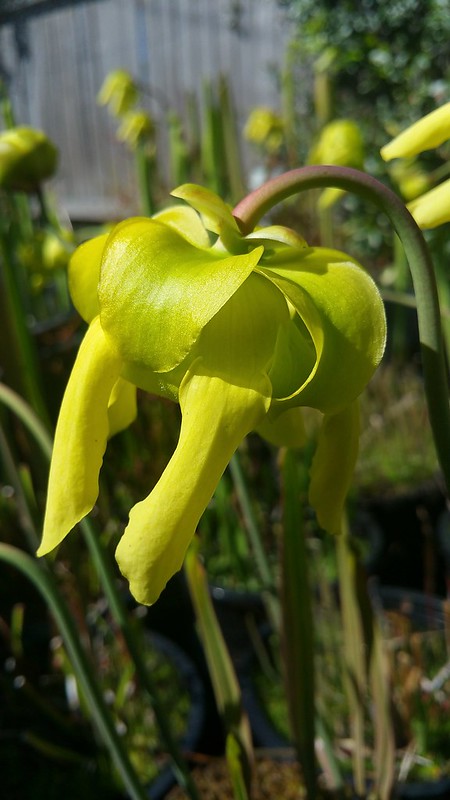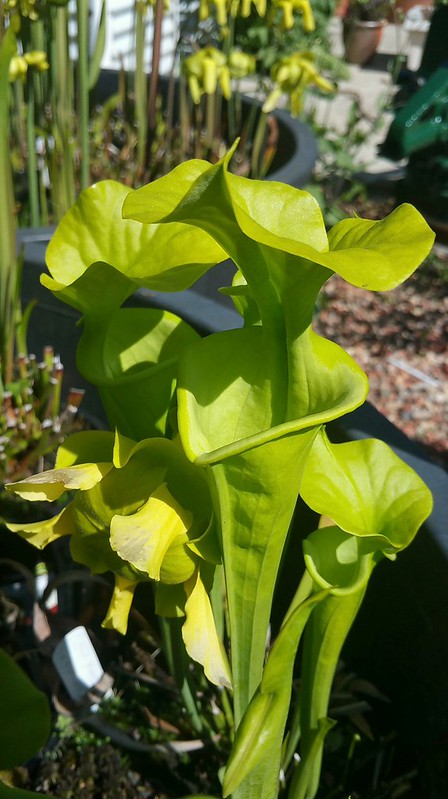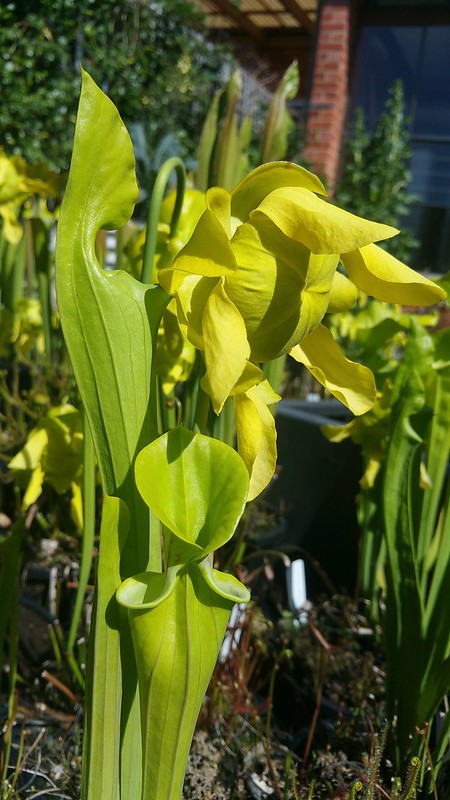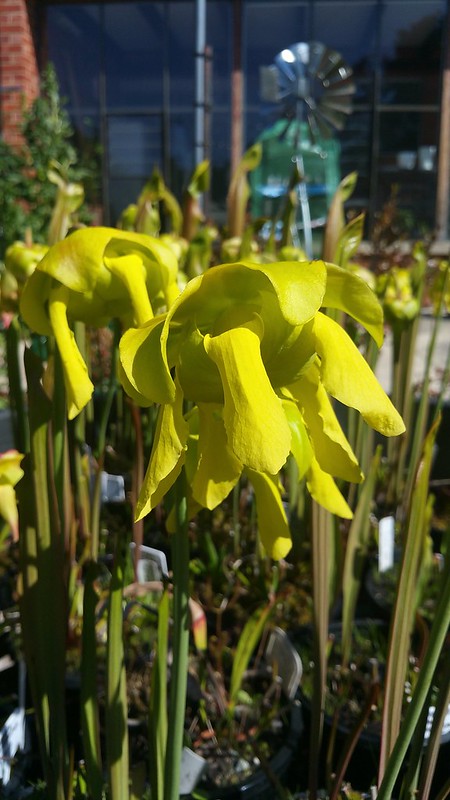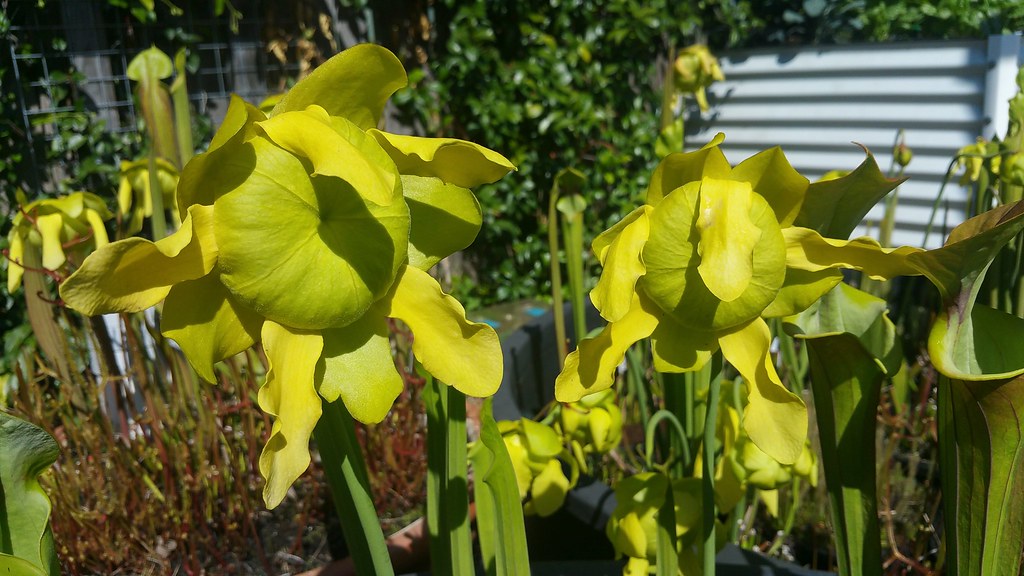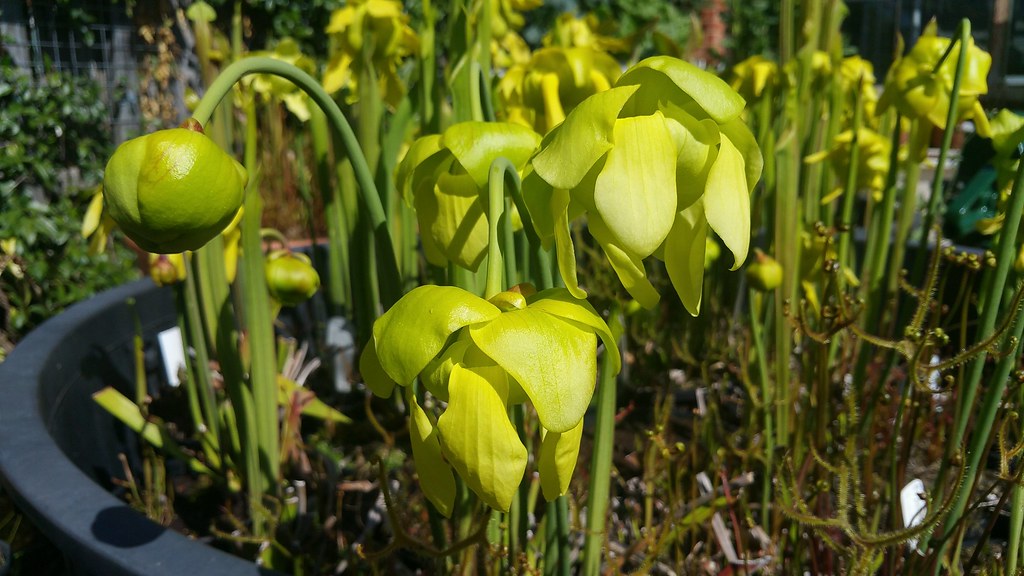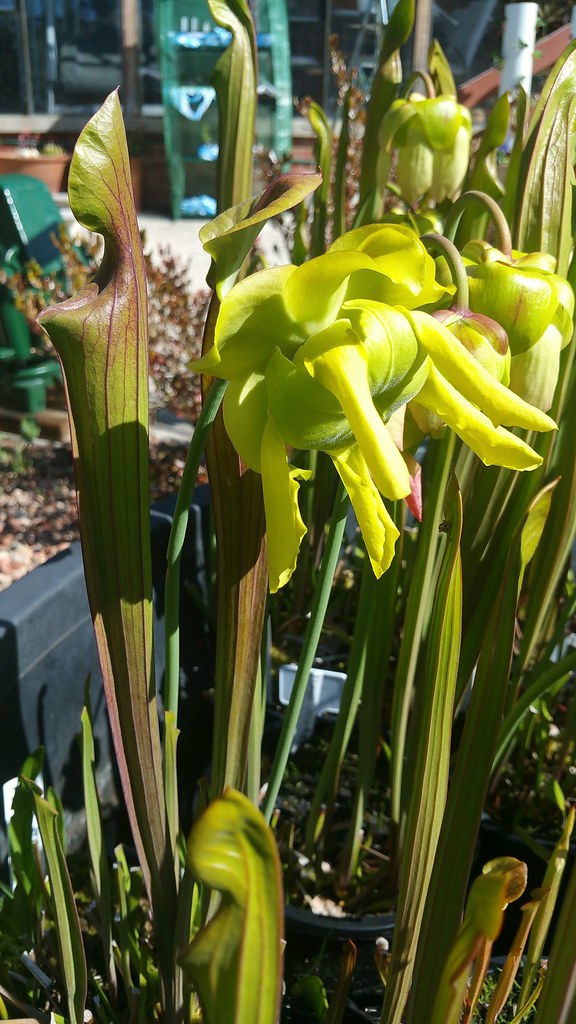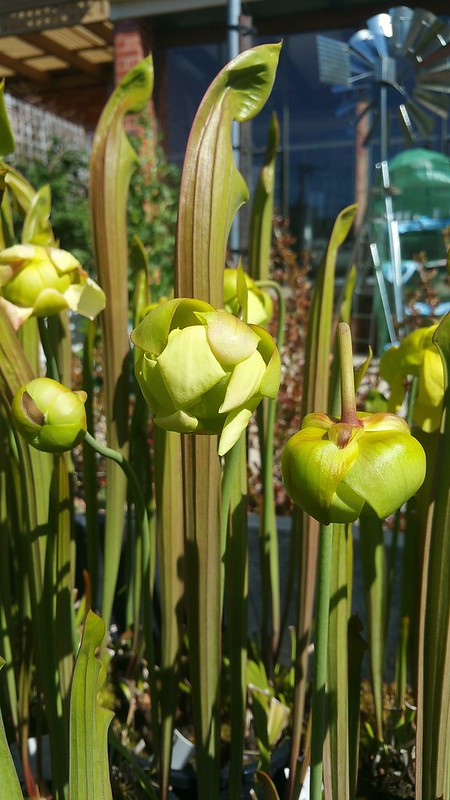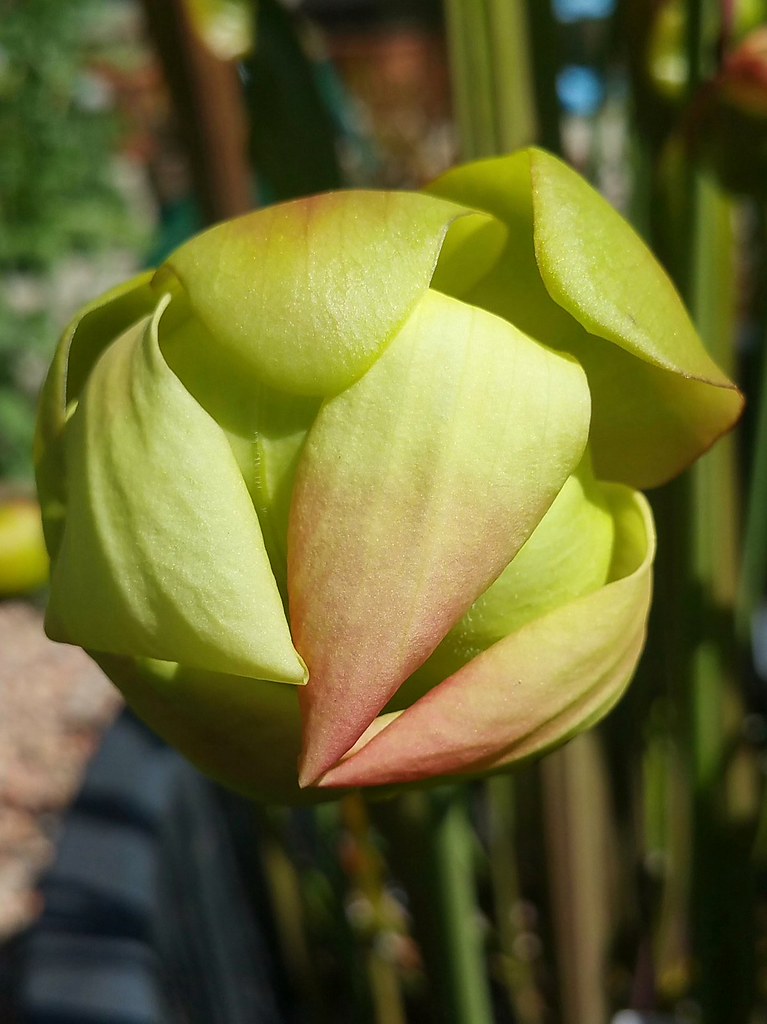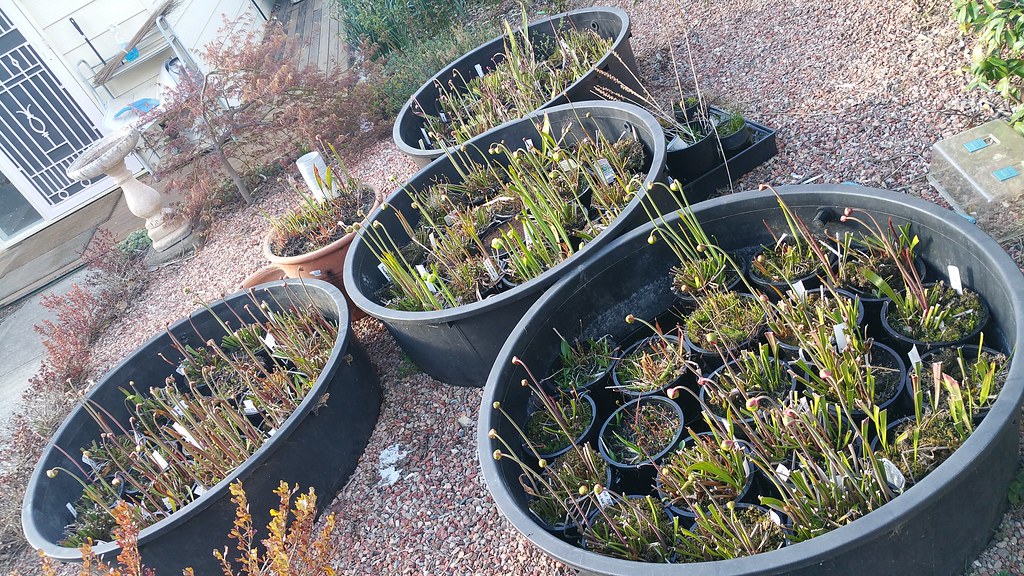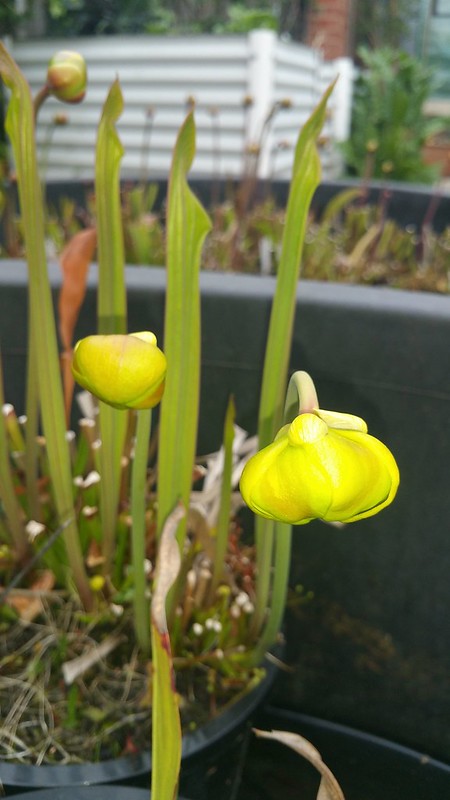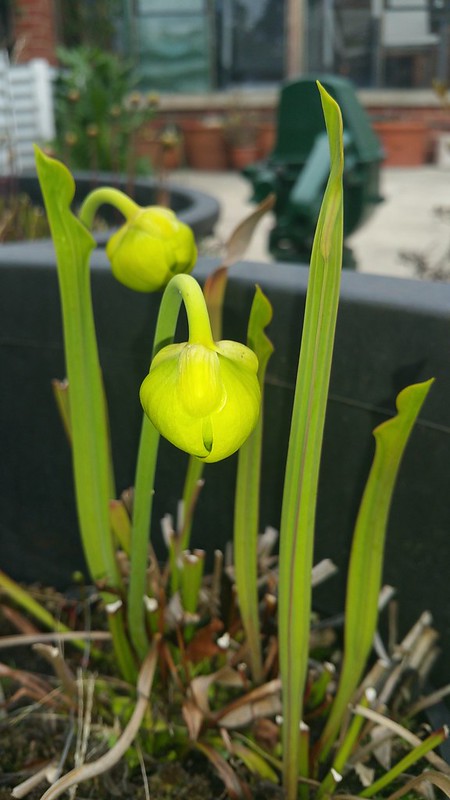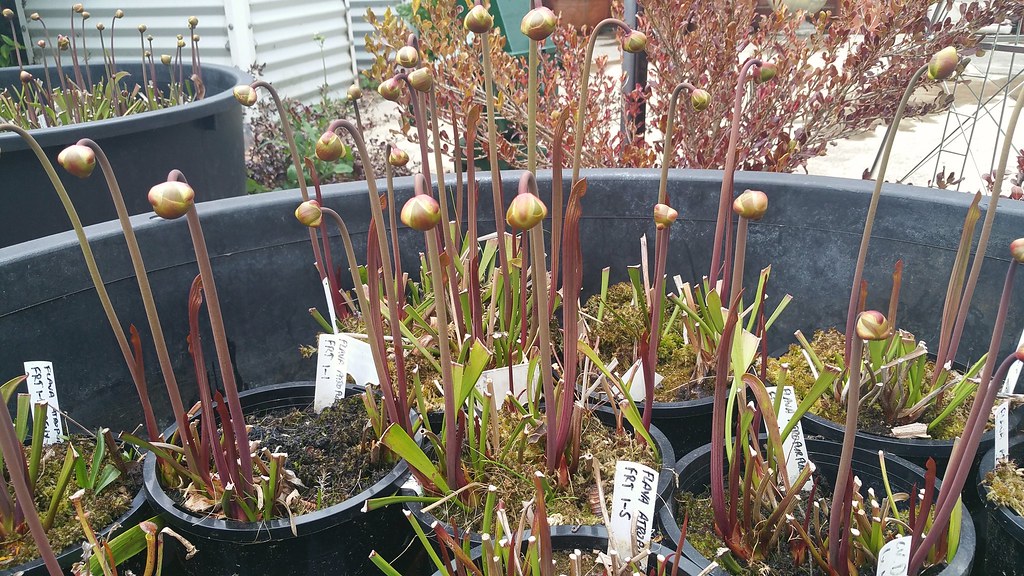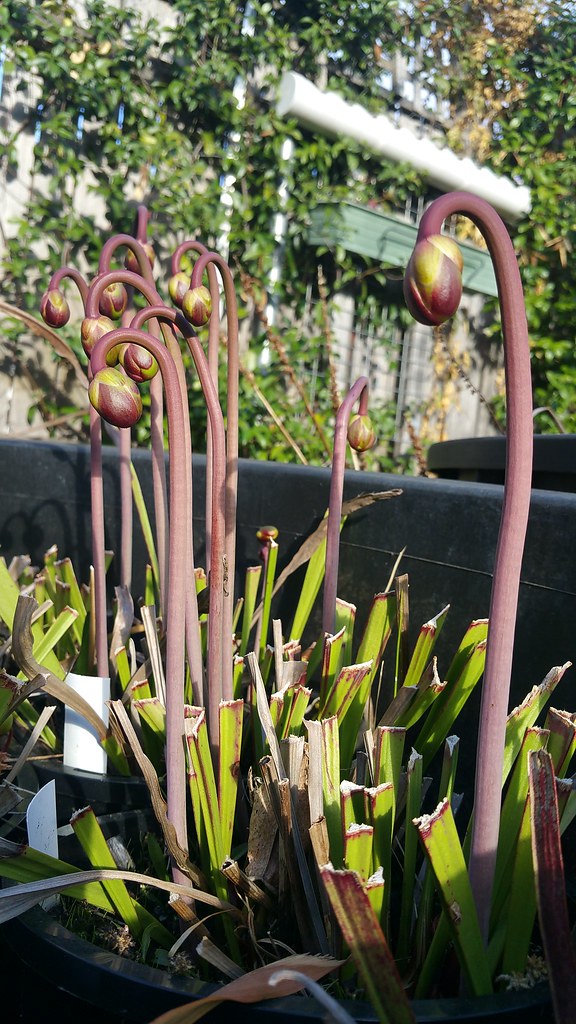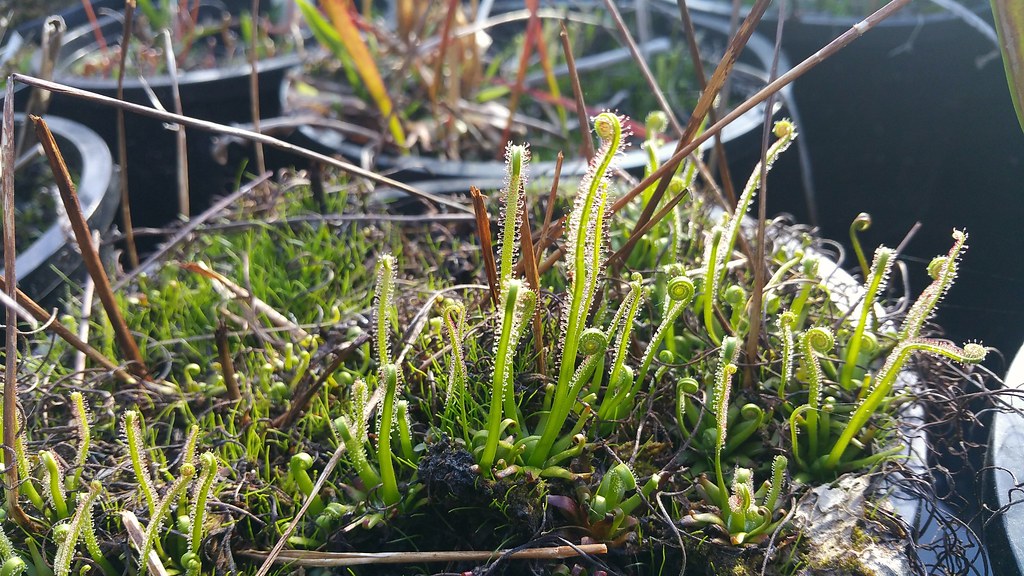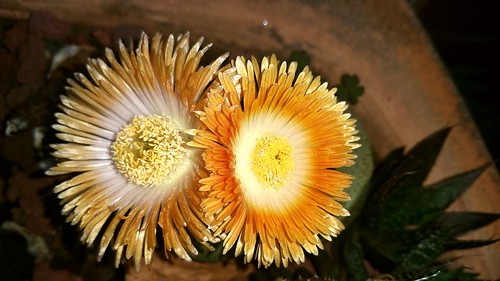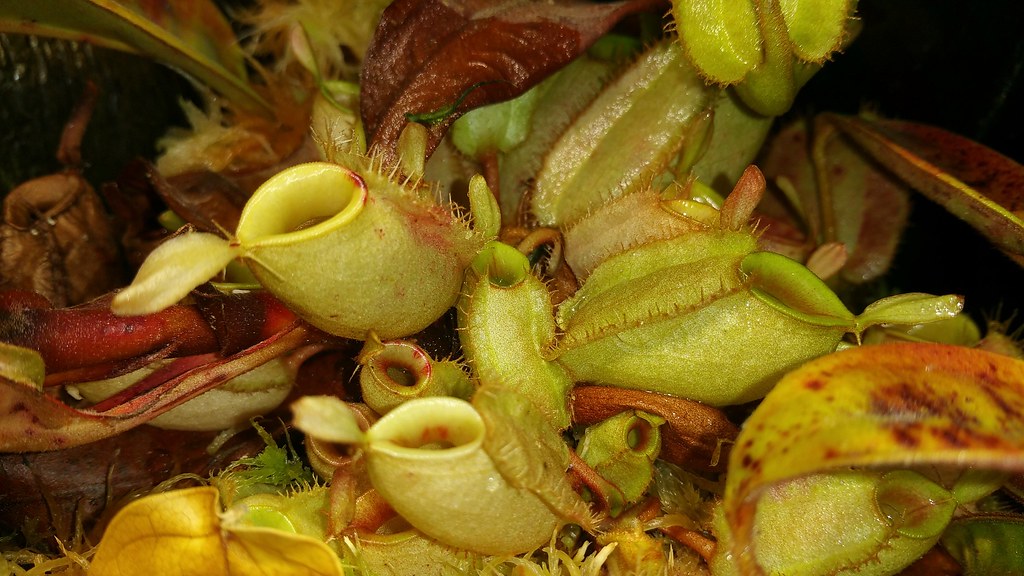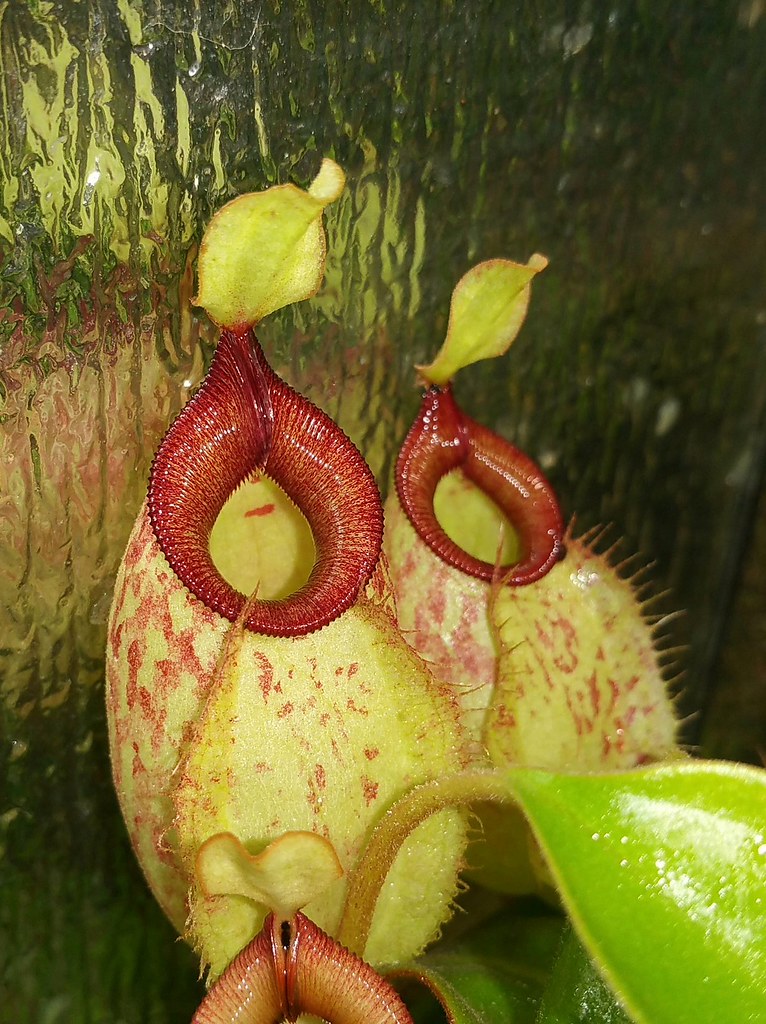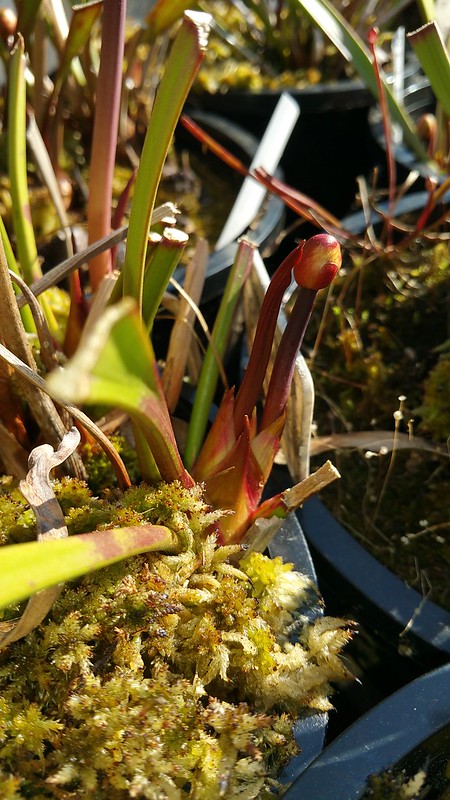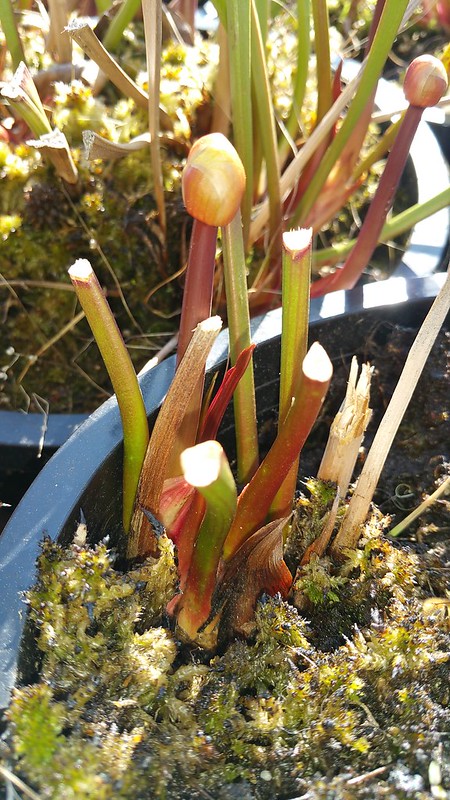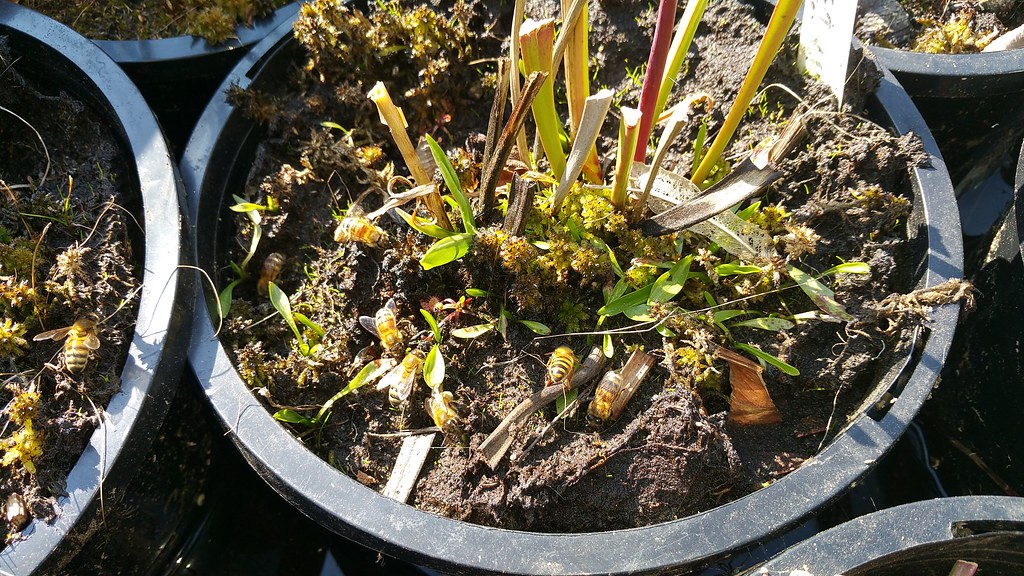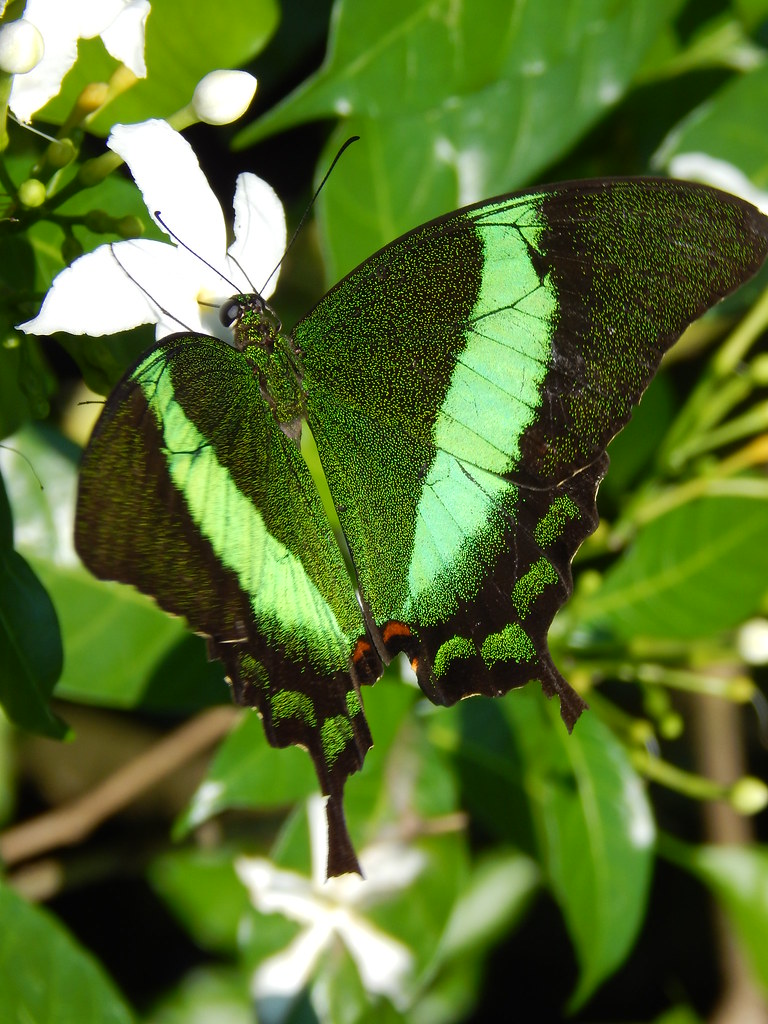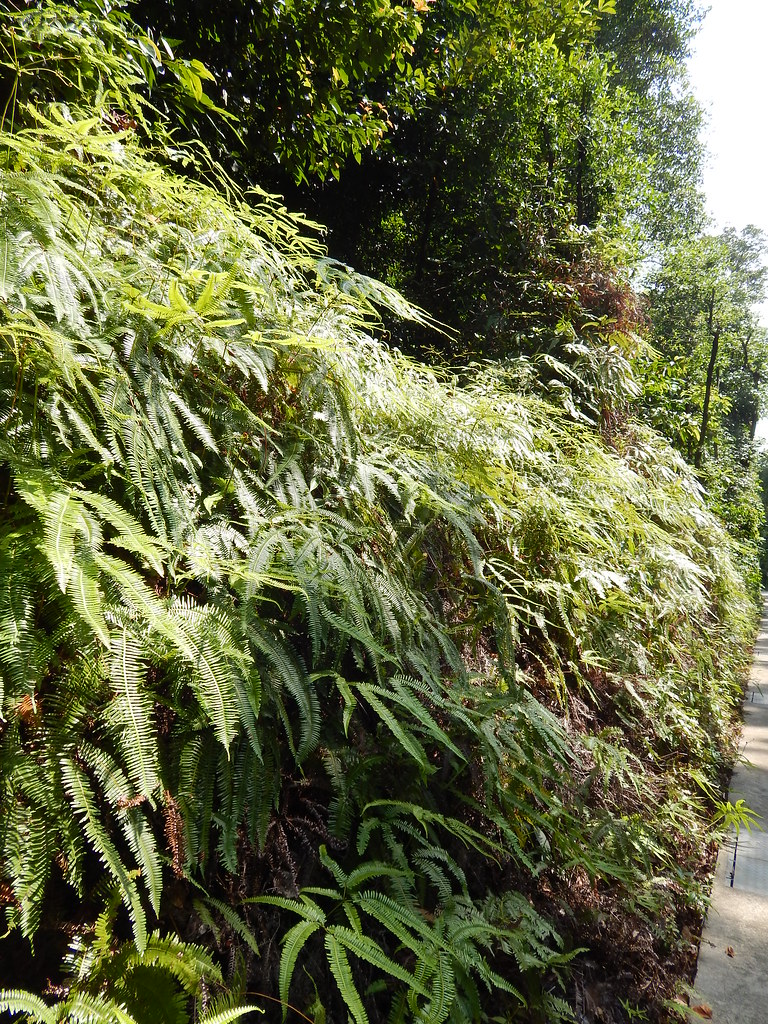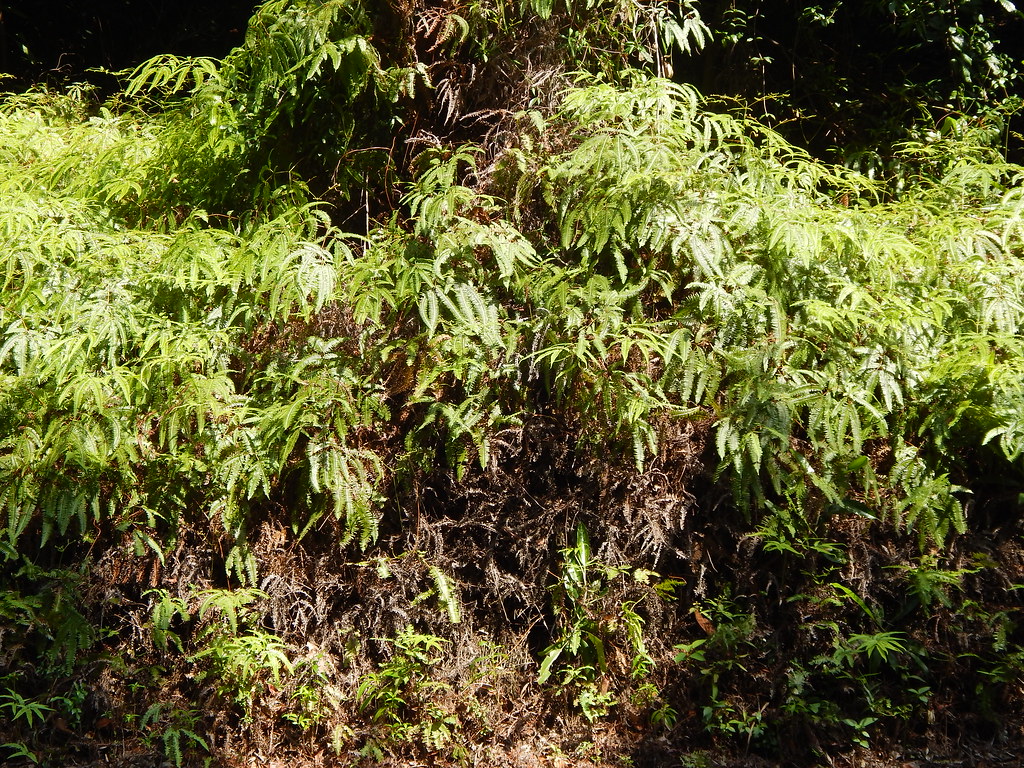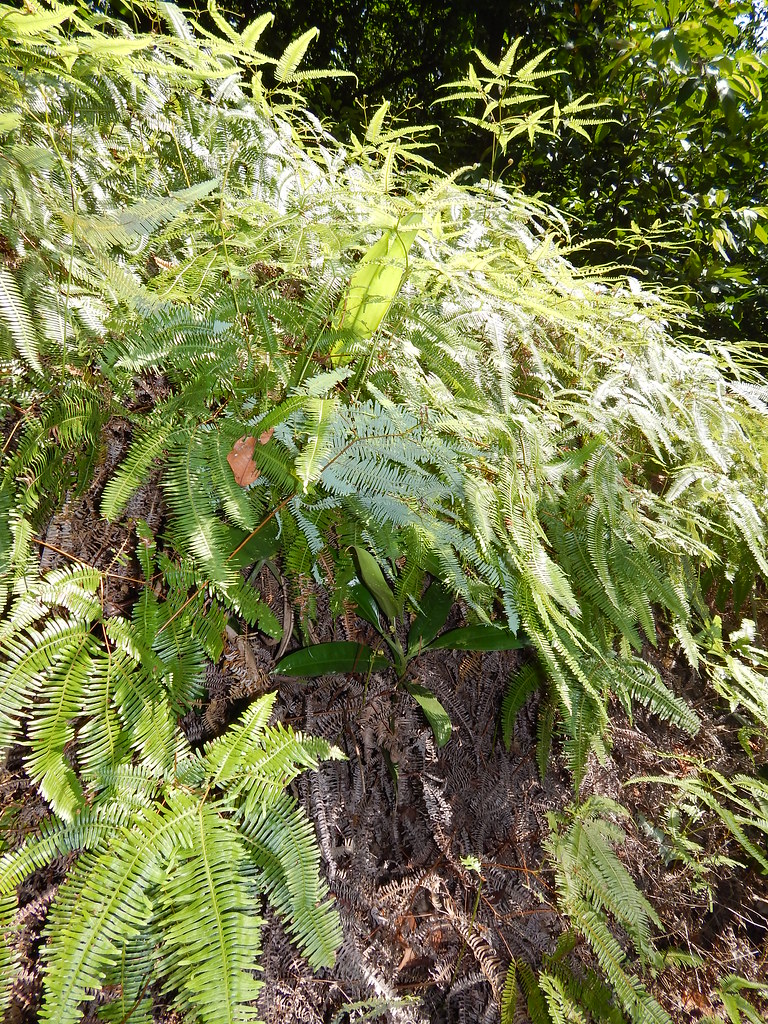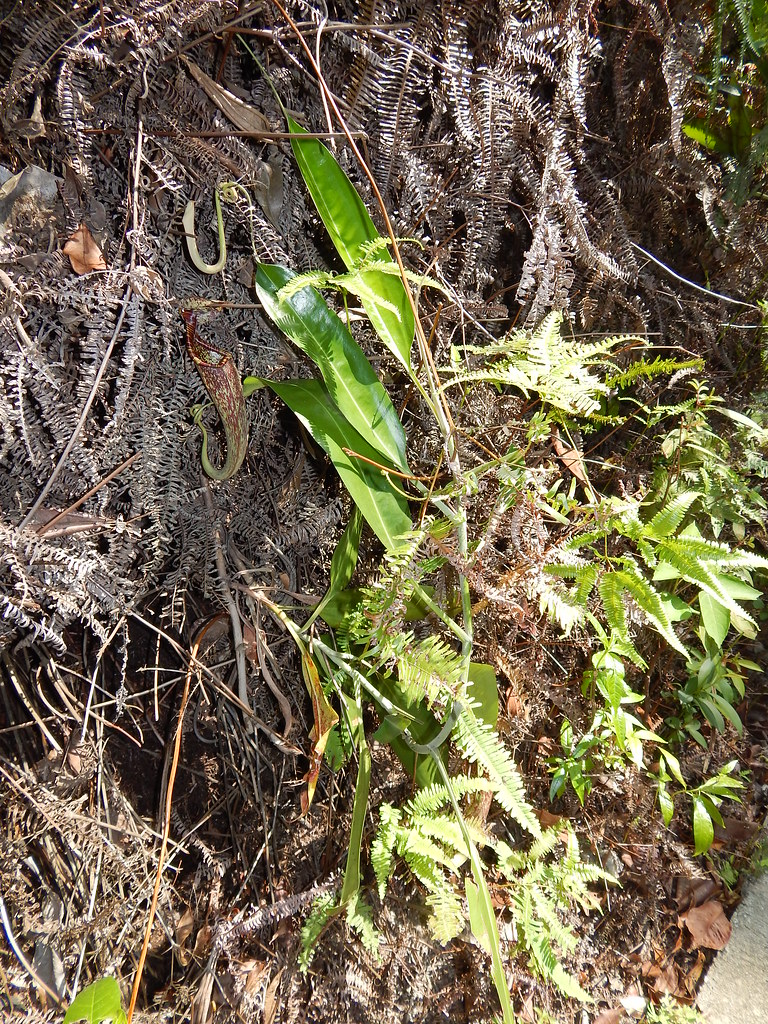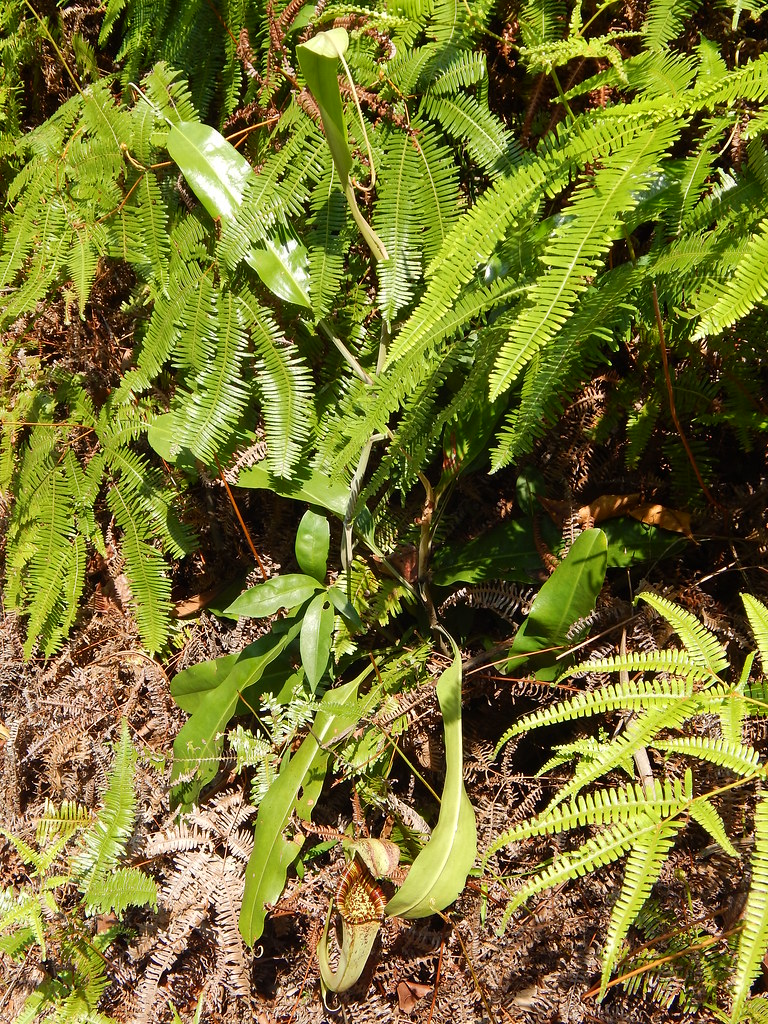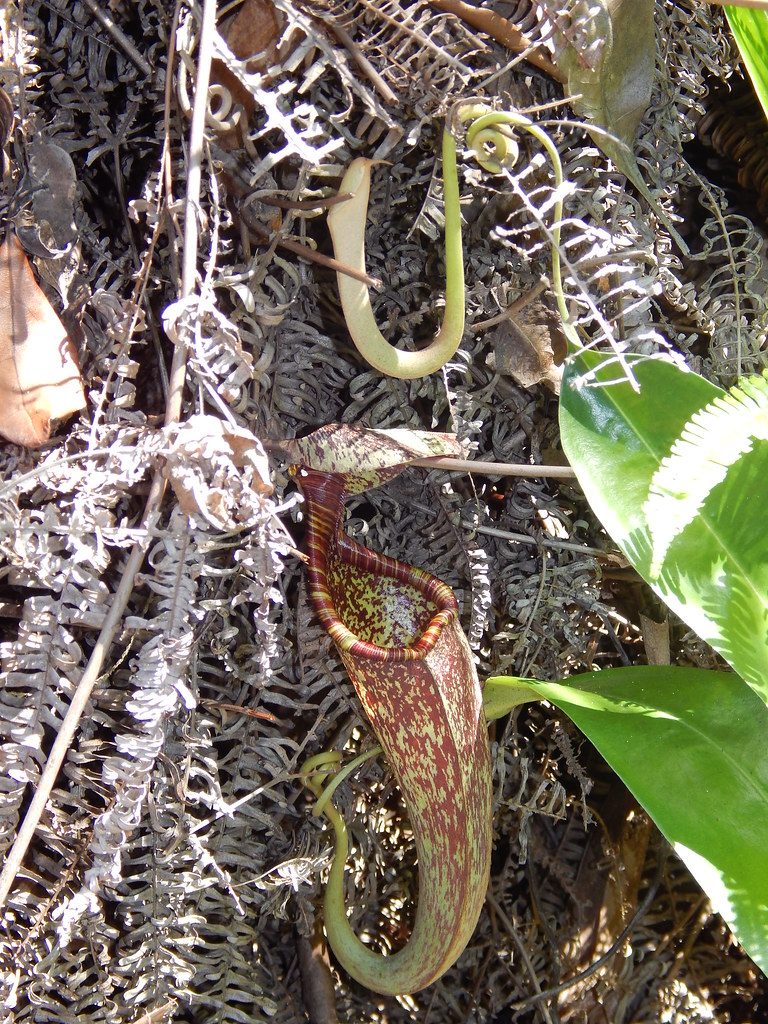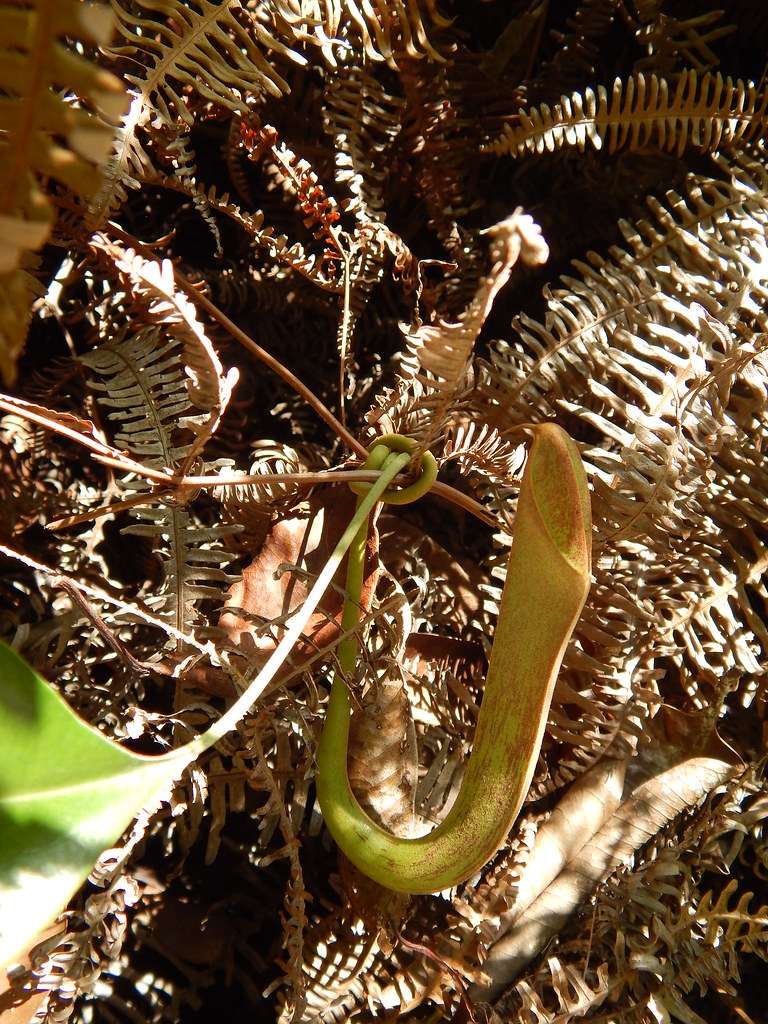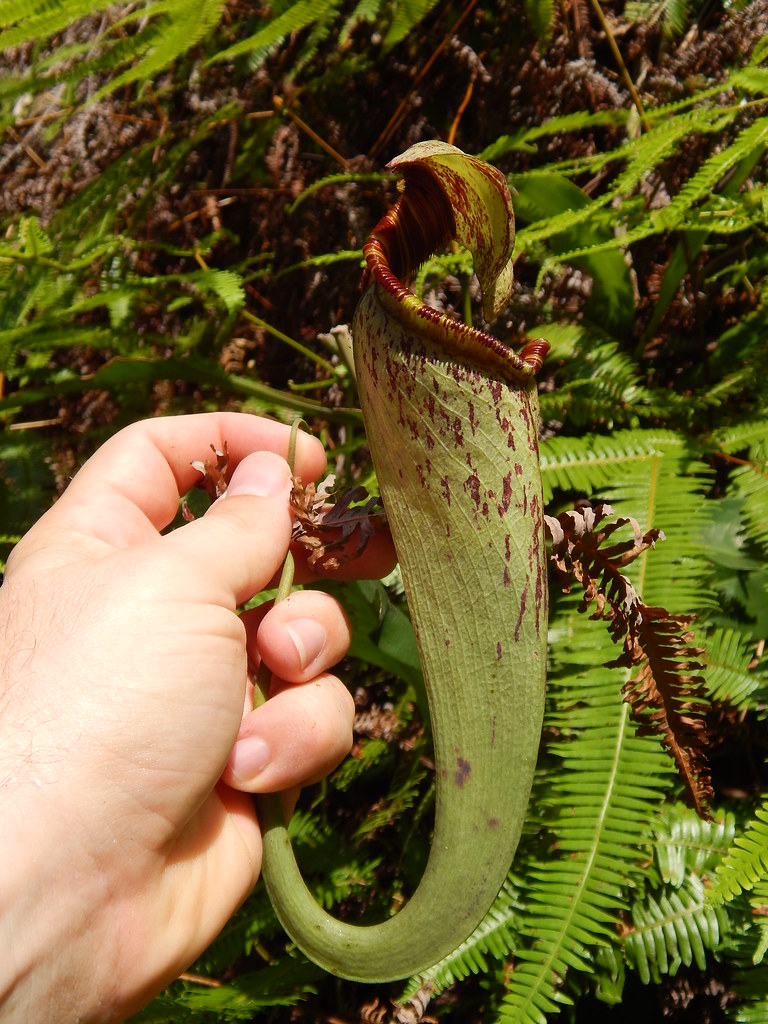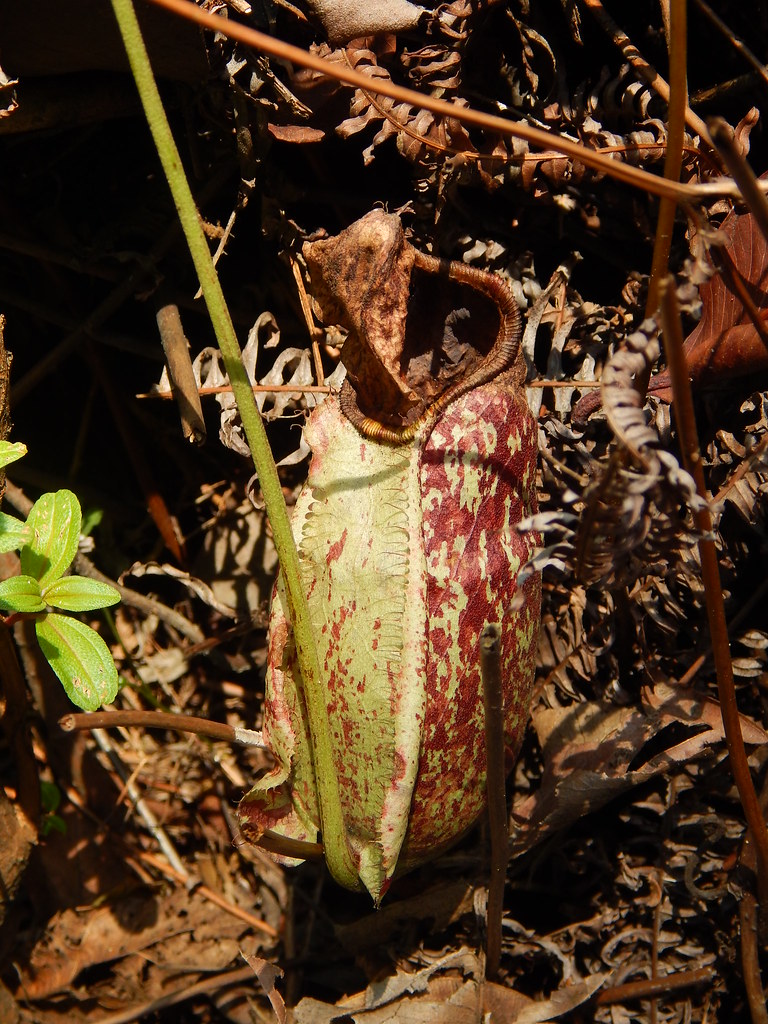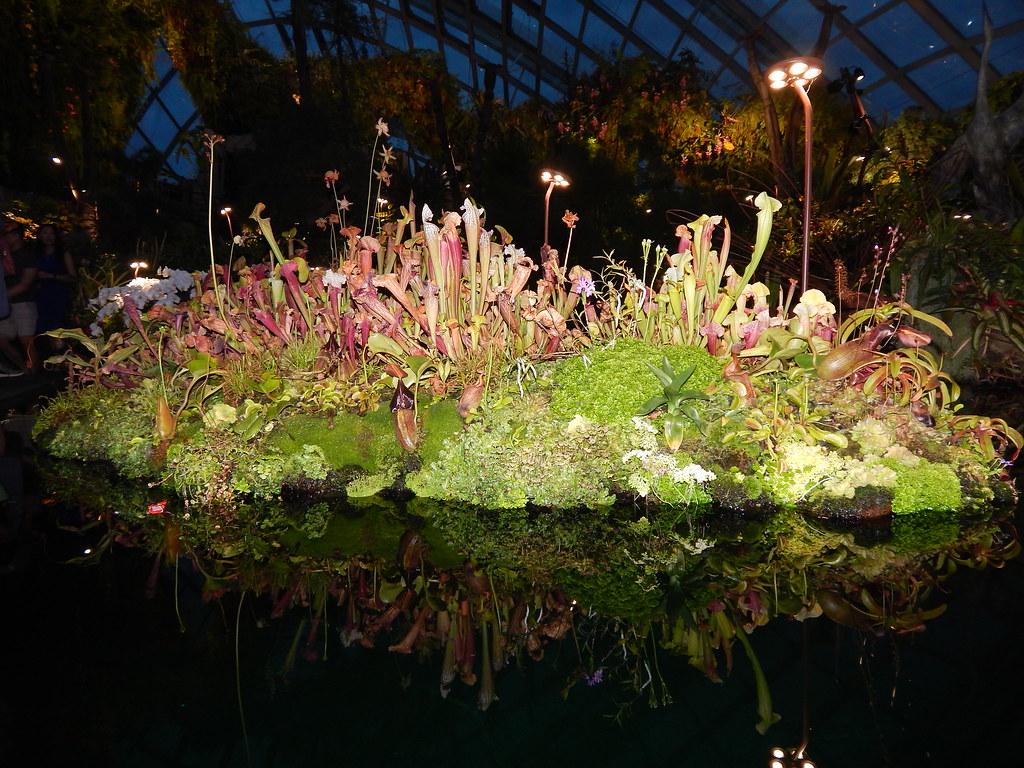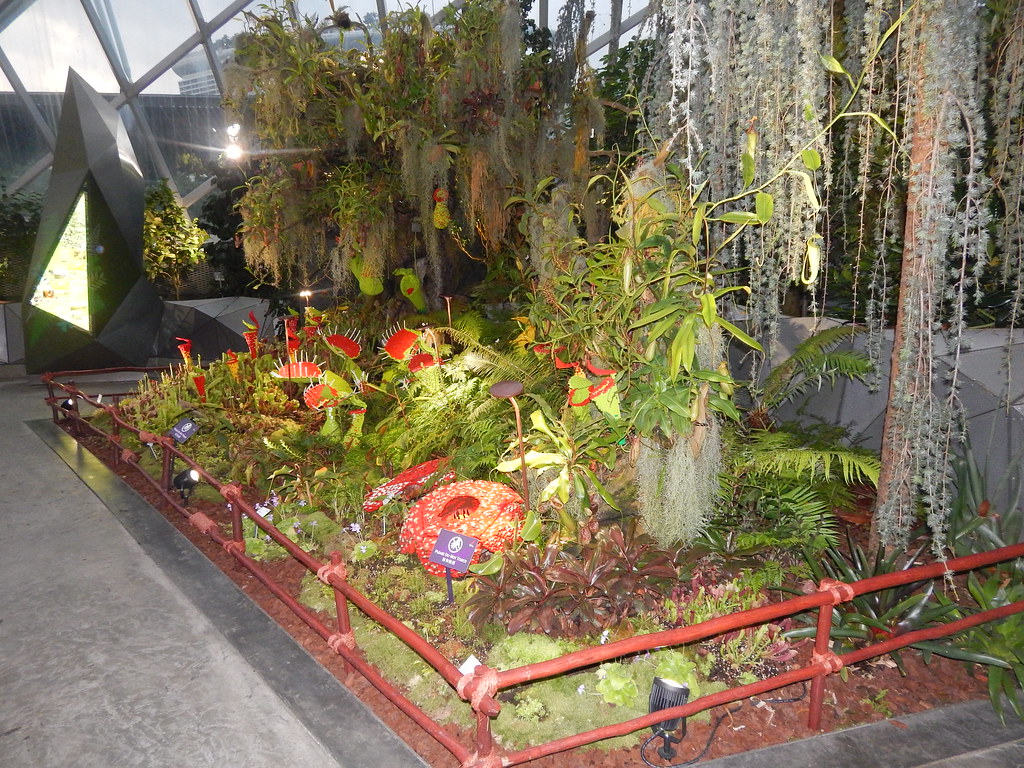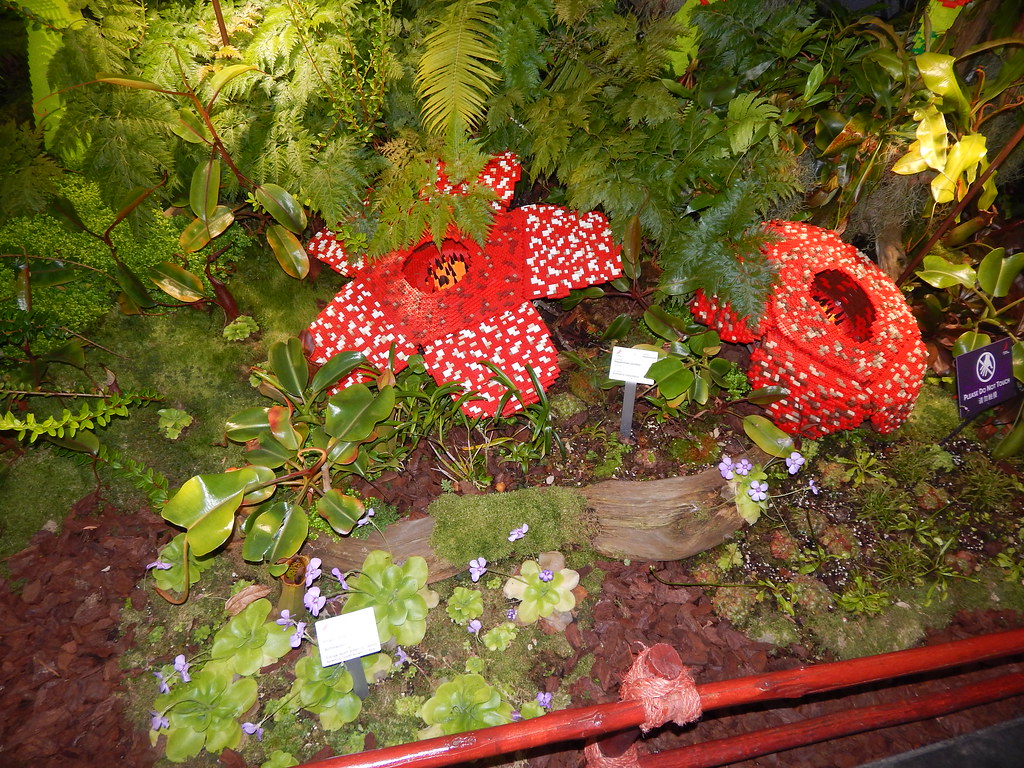Finally – the collection is in flower and the first pitchers are opening!
This is the Sarracenia flava var. atropurpurea / all red flava pond - most of these are FRT 1-1.
The flava var. flava/maxima/rugellii/cuprea/ornata pond (so striped/veined/green and cut throat flava). The pot at right is a mini-bog I set up just for my VFTs. Behind it is the red tube (flava var. rubricorpora) pond.
And finally, the leucophylla pond.
There’s only a few leucophylla flowers open so far – cv. Tarnok and a random clone from my friend Owen. The majority of the other clones are still a week or so off flowering yet.
This is a flava var. cuprea I got from Gotcha! Plants back in 2009. Its been a very solid performer.
Another coppertop flava, this is ‘F1’ (as in flava clone # 1) from Fly Free Zone (David & Felicity Martin). Over 30 years old and still one of the better coppertops around.
Here’s the only Sarracenia with pitchers fully opened – flava var. maxima ‘Honeysuckle Road, Harleyville, NC’. Greg Bourke imported a load of seed from this locality in the early 2000s, germinated some and gave the rest to other growers, one of whom was Ron Abernethy, who then gave this and a few other plants to me. Var. maxima are a surprising rarity here in OZ; most I’ve grown turned out to be a hybrid with Sarracenia alata, or produced a copper lid if grown in full sun.
At left is another Harleyville, NC, plant, this time a var. flava. I brought this plant at the Sydney meeting of the International Carnivorous Plant Society in 2007; it sometimes produces very pronounced teeth on the umbrella of the flower. At right is another var. flava, this time fro Gotcha! Plants in Queensland.
A few more assorted flava flowers, noting also that the Blue Mountains Drosera binata growing in the same pots are also out of dormancy.
Here’s a couple of special things from the all red flava pond. At left is a cross between FRT 1-1 and a clone of flava var. atropurpurea I used to grow from Phil Reytter of Lithgow. Phil’s plant was not very vigorous, so it went from the collection last year. But its cross with FRT 1-1 is very vigorous. At right is a Sarracenia x moorei backcross I like to call ‘David Martin’ after its breeder. It produces spectacular red tubed pitchers with very heavily veined lids. Its been a bit temperamental in the collection here, but I’m hoping that it will come good for me this year.
And to close, the flowers of FRT 1-1, a leucophylla-introgressed all red flava grown by David from imported seed in the 1970s.
‘Till next time!
